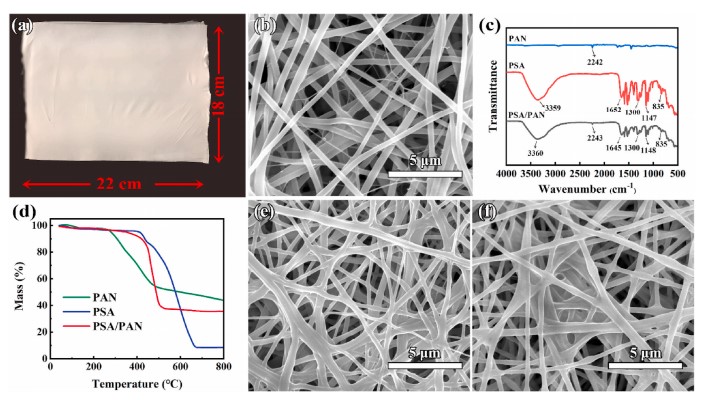© Copyright 2020 Foshan Membrane Technology Co., Ltd. All rights reserved. Sitemap
Polymer nanofibers have a great potential in PM2.5 filtration, but they generally cannot remove particulate matter (PM) particles directly from high-temperature sources due to their vulnerable structure. Polysulfonamide (PSA)/polyacrylonitrile (PAN) composite nanofibers that can withstand a temperature up to 400 degrees C, were fabricated by a simple electrospinning method. The interactions between PSA and PAN defined the resulting microarchitecture and shape of the nanofibers when suffering heating. The PSA/PAN composite nanofibers exhibited above 99.7% removal efficiency for the PM2.5. More importantly, such a high PM2.5 removal efficiency was well retained even after heating the nanofibers at temperatures ranging between 100 degrees C and 400 degrees C. The nanofiber air filter could continuously work for 100 h in an environment with the concentration of PM2.5 approaching 380 mu g/m(3). The good thermal stability and high filtration efficiency of PSA/PAN nanofibers make them attractive in various applications, especially when high-temperature bearable polymer components are needed.
聚合物纳米纤维在PM2.5过滤方面具有巨大潜力,但是由于其脆弱的结构,它们通常无法直接从高温源中去除颗粒物(PM)颗粒。在这里,我们通过简单的静电纺丝法制备可以承受高达400摄氏度温度的聚磺酰胺(PSA)/聚丙烯腈(PAN)复合纳米纤维。 PSA和PAN之间的相互作用定义了受热时纳米纤维的微结构和形状。 PSA / PAN复合纳米纤维对PM2.5的去除效率高于99.7%。更重要的是,即使在100摄氏度至400摄氏度之间的温度下加热纳米纤维后,仍能很好地保持PM2.5去除效率。纳米纤维空气过滤器可在PM浓度较高的环境中连续工作100小时,接近380μg / m。 PSA / PAN纳米纤维的良好热稳定性和高过滤效率使其在各种应用中具有很好的利用价值,尤其是在需要耐高温的聚合物成分时。

Published: 2021
Journal :COMPOSITES COMMUNICATIONS
Impact Factor:No data available
Paper link: https://www.sciencedirect.com/science/article/abs/pii/S2452213920303090